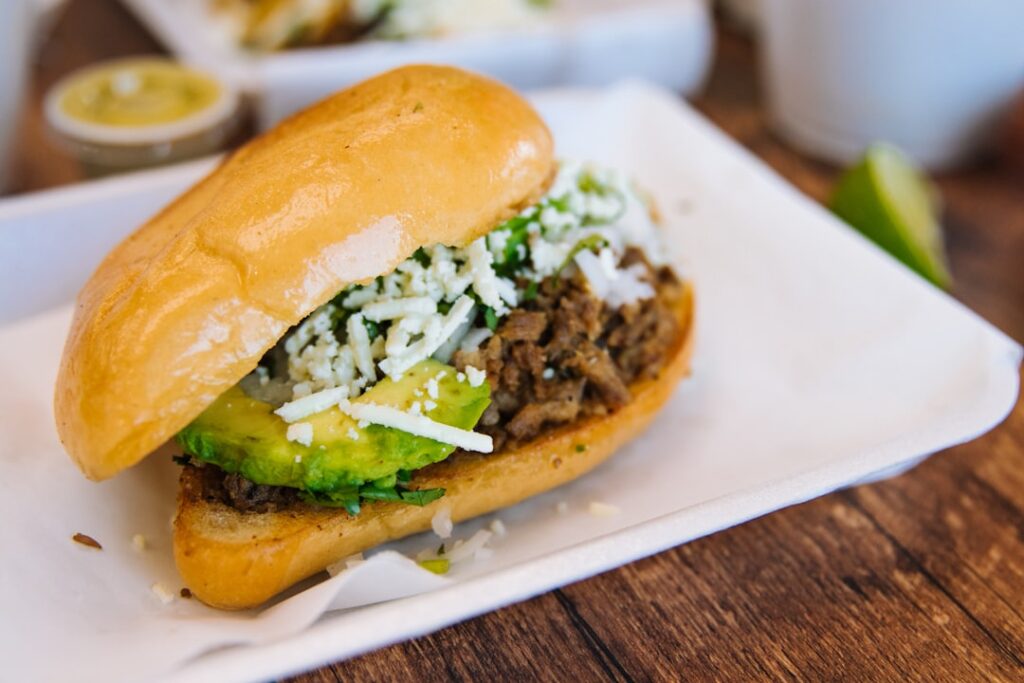Understanding What Makes a Torta Special
What is a torta might seem like a simple question, but the answer depends entirely on where you are in the world. This single word represents one of the most fascinating examples of how food terminology travels across cultures and evolves into something completely different.
Quick Answer for Food Travelers:
- In Mexico: A hearty sandwich on crusty bread (bolillo or telera) filled with meats, beans, and fresh garnishes
- In Spain: A cake or flatbread
- In Philippines: An eggplant omelet
- In Italy: A type of pie or tart
For food enthusiasts exploring authentic culinary experiences, the Mexican torta stands out as the ultimate street food sandwich. Born from French colonial influence in 1860s Mexico, these portable powerhouses combine crusty European-style bread with bold Mexican flavors.
The beauty of a torta lies in its versatility. Whether you’re biting into a simple ham version or tackling a towering torta cubana loaded with multiple meats, each bite tells the story of Mexico’s culinary evolution.
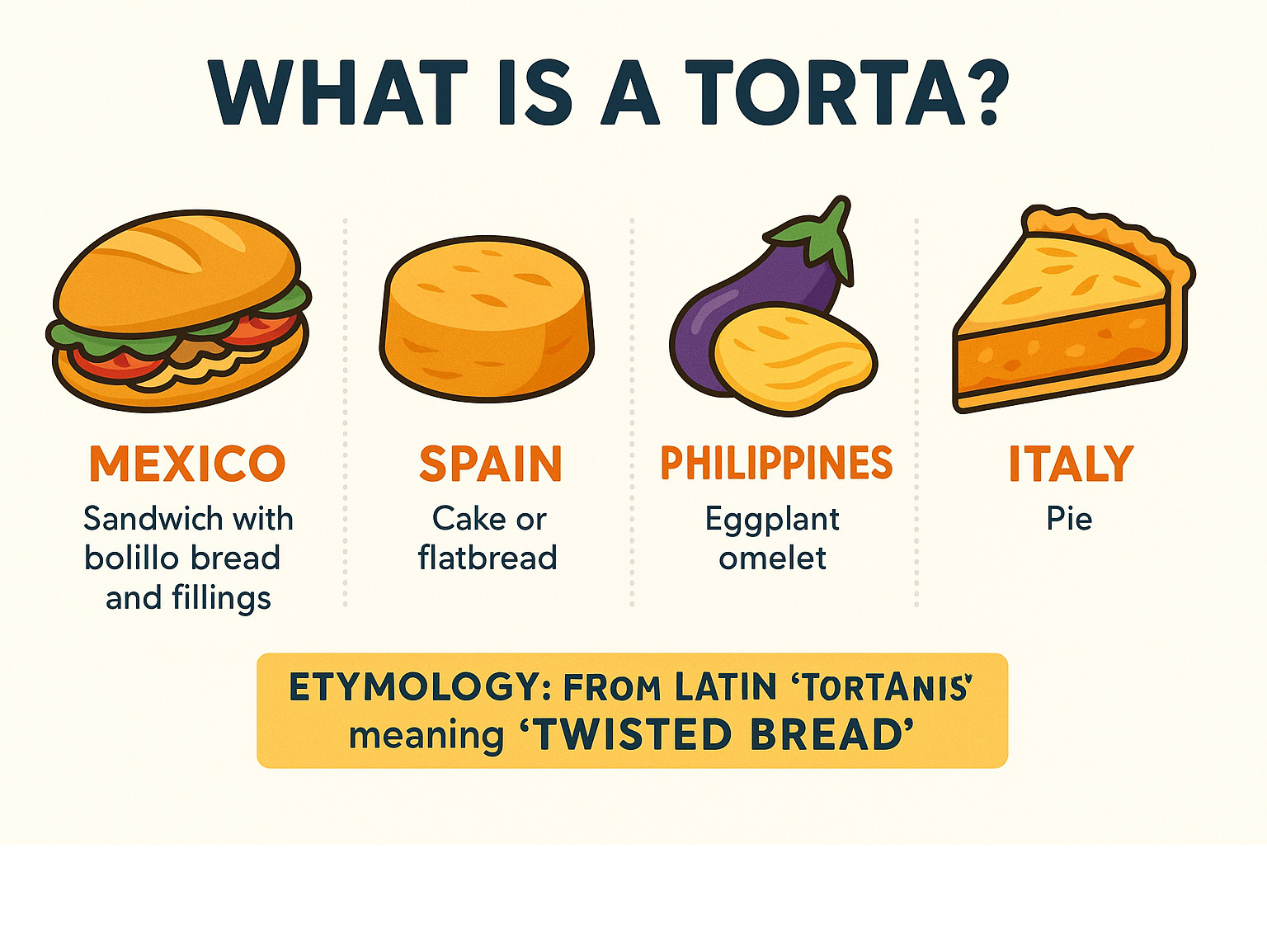
Quick what is a torta terms:
What Is a Torta? Word Origins & Global Meanings
The story of “torta” traces back to Late Latin “torta panis,” meaning “twisted bread.” When the word traveled to Spain, it evolved to describe cakes and flatbreads. There’s a charming Spanish saying: “A falta de pan, buenas son tortas” – “When you’re out of bread, tortas will do just fine.”
As Spanish explorers spread across the globe, they took this word with them – and each culture made it their own. In the Philippines, torta means an eggplant omelet. Italian cuisine uses “torta” for pies and tarts, while Brazil and Malta have their own interpretations.
Then came Mexico in the 1860s, where French colonial influence mixed with local ingredients and Spanish terminology. Mexican cooks took crusty European bread and stuffed it with bold, local flavors – creating the hearty sandwich we know today.
Focus Keyphrase: what is a torta across cultures
Understanding what is a torta across cultures reveals fascinating culinary homonyms. Order a torta in Mexico City, and you’ll get a substantial sandwich. Ask for the same in Madrid, and you might receive a sweet cake. Request it in Manila, and an eggplant omelet arrives.
This linguistic evolution shows how food terminology travels and transforms through colonization and cultural exchange. Each culture adapted the word to fit local ingredients and taste preferences, creating a delicious reminder that food represents history and culture.
The Mexican Torta: Bread, Fillings & Assembly
The Mexican torta emerged during the French occupation in the 1860s, when French bakers brought baguette-making expertise to Mexico. Local bakers transformed these techniques, creating bolillo and telera rolls that became the backbone of Mexico’s most beloved sandwich.
The magic starts with refried beans spread on the bottom half – creating a moisture barrier. Next comes the protein: tender carnitas, milanesa, or your preferred meat. Queso Oaxaca melts from the warm meat, followed by fresh avocado, lettuce, tomatoes, and pickled jalapeños.
The layering order prevents sogginess while maximizing flavor. Many torta makers finish by lightly grilling the assembled sandwich.
Bread Used in what is a torta sandwich
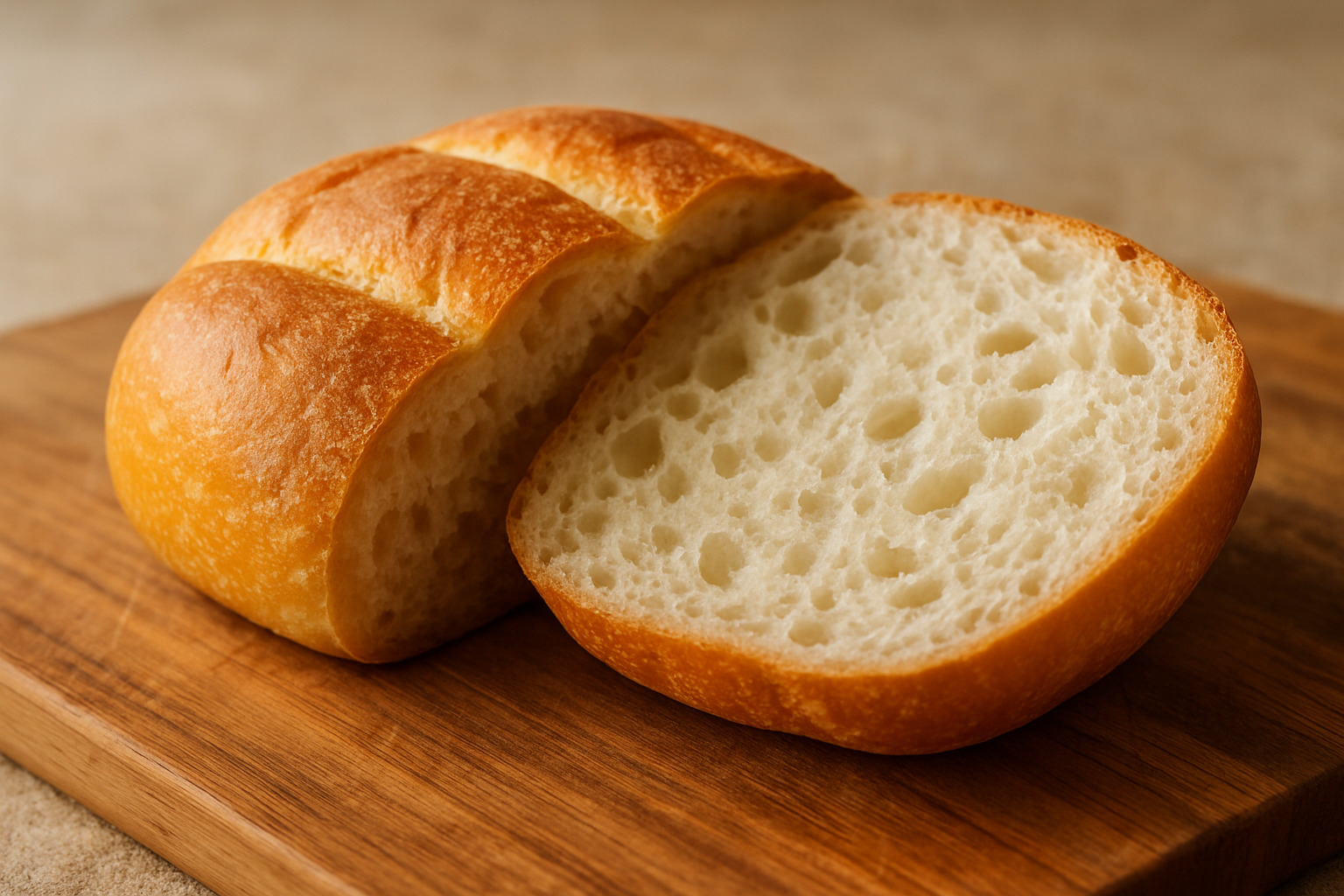
Bolillo resembles a small French baguette with hard, crusty exterior and soft interior. Telera takes a gentler approach with softer, more pliable rolls sectioned into three pieces. In Jalisco, birote offers regional character.
Can’t find authentic Mexican rolls? Portuguese rolls, kaiser rolls, or any crusty water roll with soft interior work well.
Typical Fillings & Garnishes
Carnitas leads the protein parade – slow-cooked pork that’s crispy outside and tender inside. Carne asada brings charred edges and smoky flavor. Milanesa offers comfort with its golden breaded coating, while chorizo adds heat and richness.
Vegetarians enjoy nopales (grilled cactus paddles) that provide unique texture. Shredded lettuce, tomatoes, white onions, and pickled jalapeños add essential freshness. Chicharrones make excellent crunchy additions.
How to Assemble what is a torta Step-By-Step
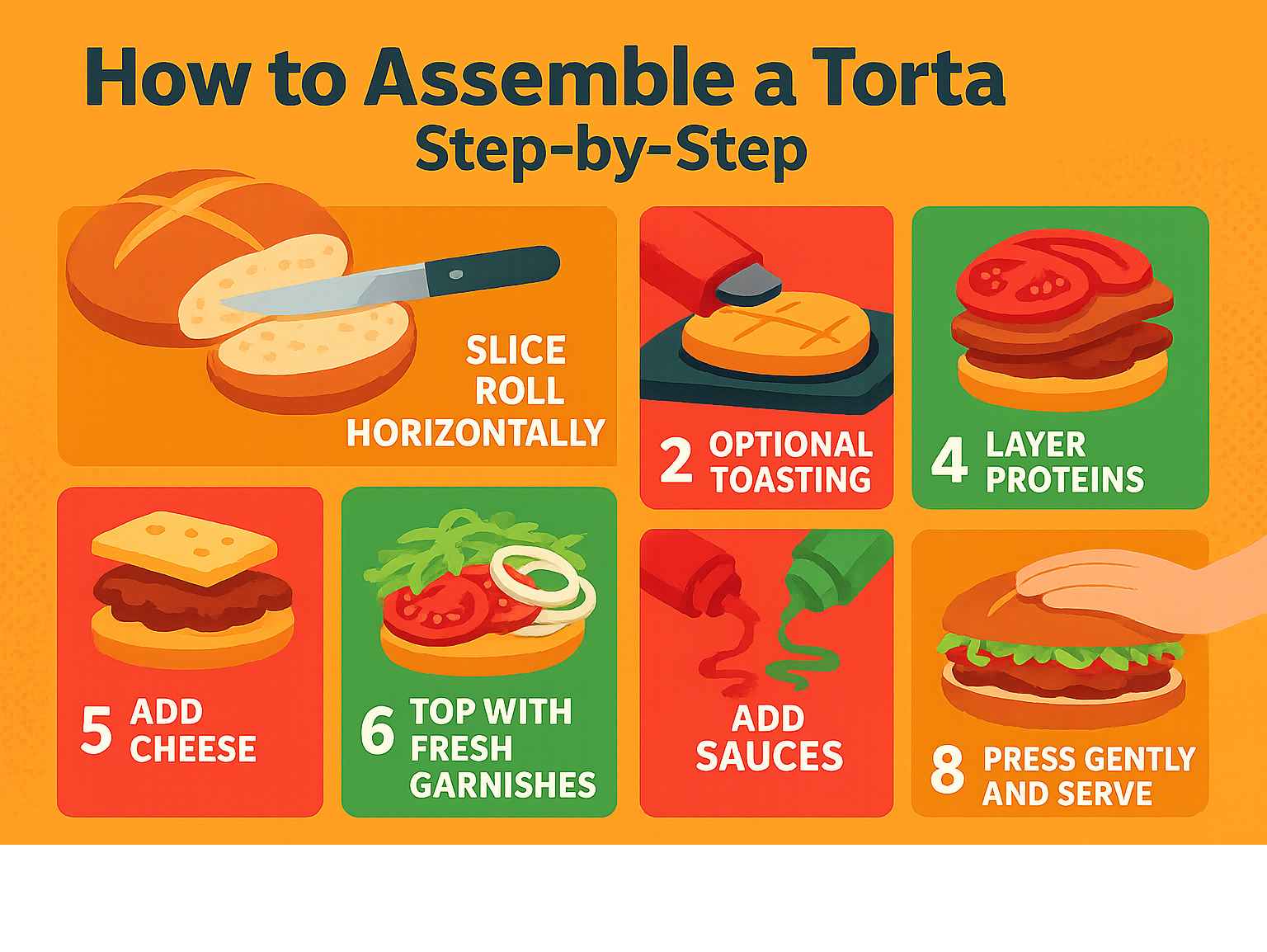
Slice your roll horizontally, leaving the bottom half thicker. Spread refried beans evenly – this is your moisture barrier. Layer warm proteins next, followed by cheese so it melts slightly. Add fresh elements: lettuce, tomato, onion, avocado. Drizzle sauces strategically rather than drowning everything. Press gently and serve immediately.
Regional & Specialty Varieties You Need to Know
Torta Ahogada from Guadalajara gets completely “drowned” in fiery red chile de árbol sauce. You’ll need a knife and fork, but the saucy experience is absolutely worth it.
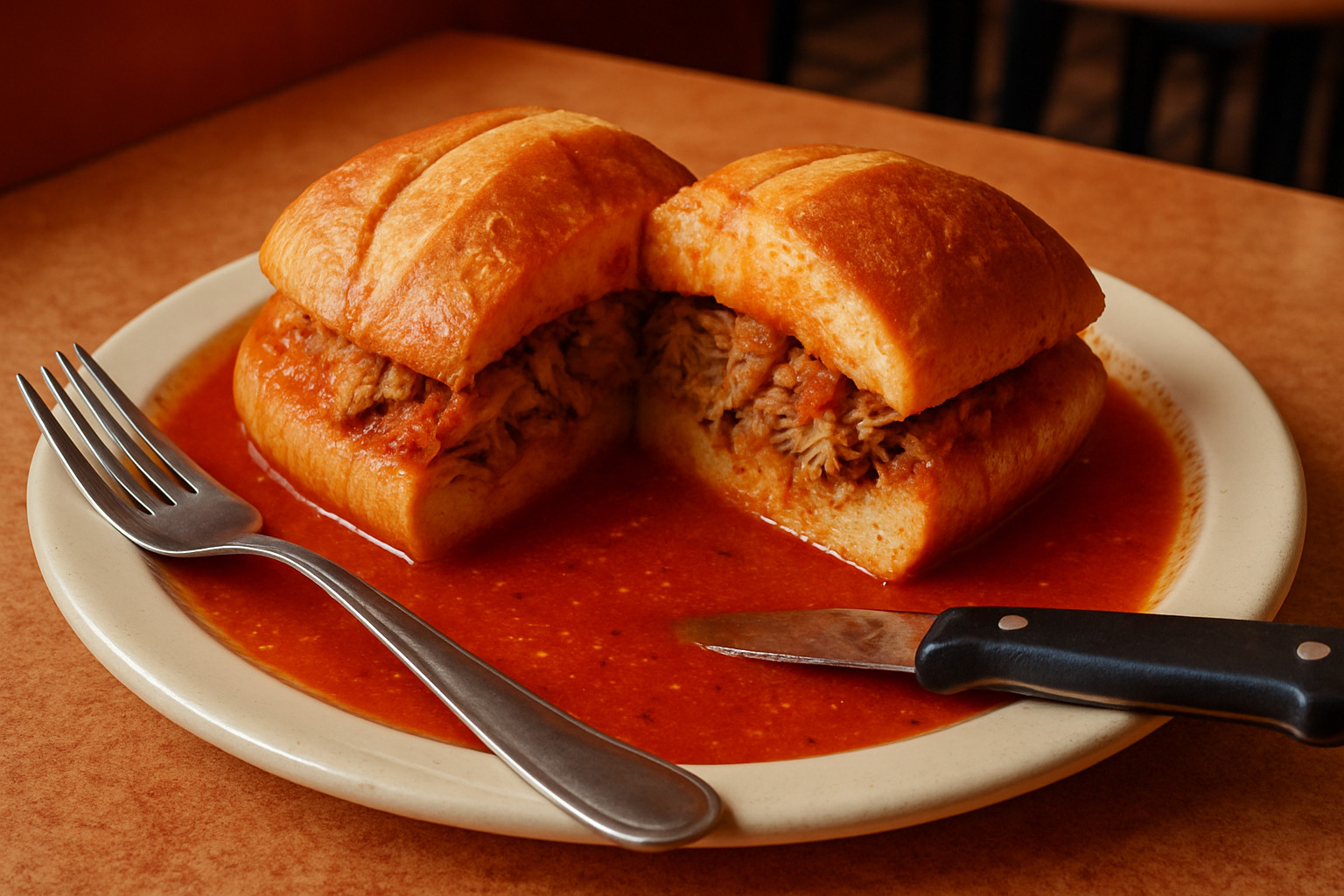
The Torta Cubana earned its name because it supposedly stands as tall as Cuba is long. This towering monster includes ham, carnitas, milanesa, chorizo, cheese, beans, avocado, and every garnish available.
Mexico City’s Guajolota stuffs an entire tamal inside telera bread – carbs on carbs that fuel workers throughout the city.
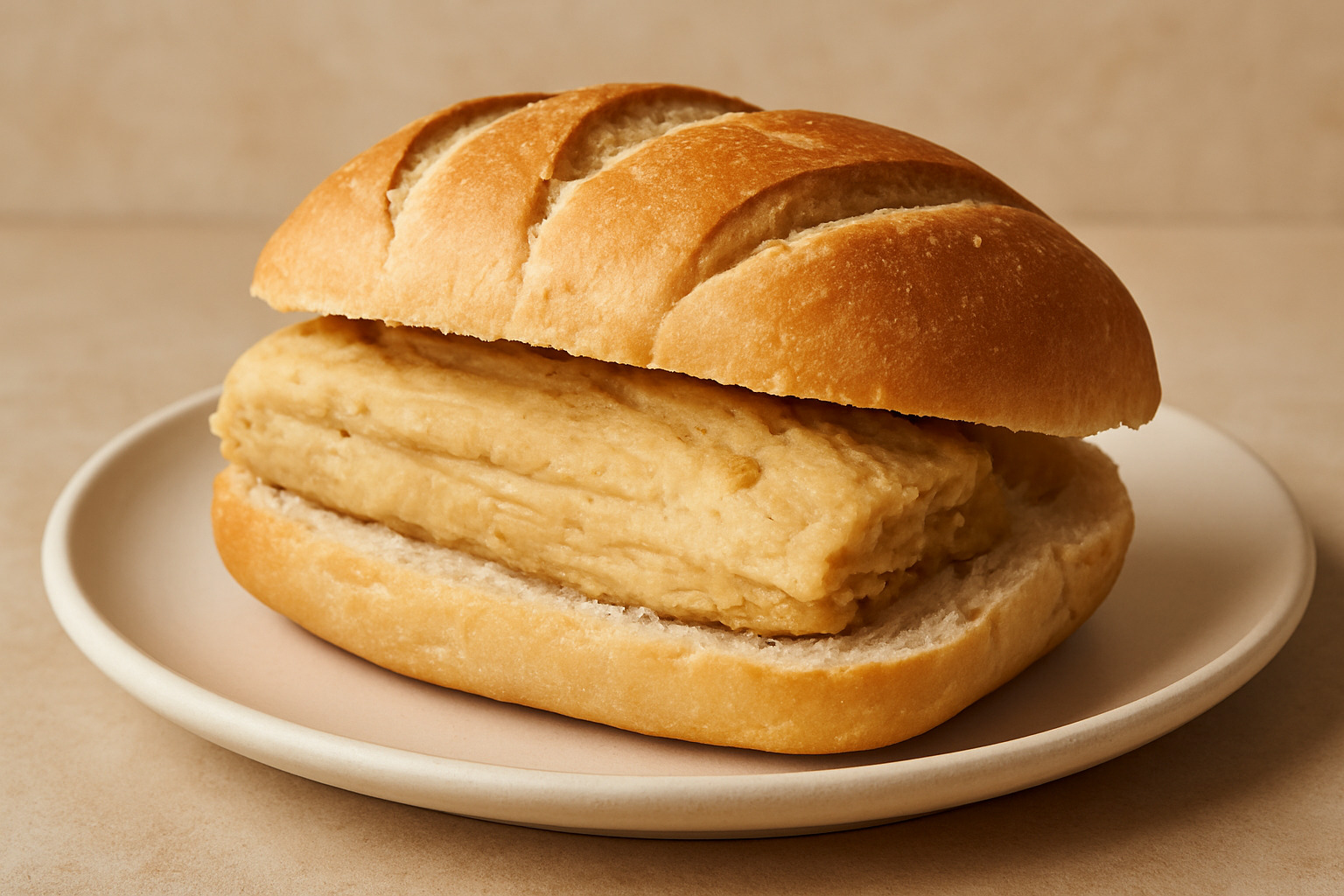
Pambazo uses special bread dipped in red guajillo sauce before grilling, creating an enchilada-like experience. The torta de pierna features slow-roasted pork leg, perfect for Sunday meals.
Tortas vs. Other Mexican Street Foods
Tacos are quick and customizable but require several to feel satisfied. Cemitas from Puebla use sesame seed buns with chipotle chiles and papalo herb. Burritos wrap everything in flour tortillas but lack textural contrast.
Tortas occupy the perfect middle ground – substantial nutrition in portable format with textural complexity soft tortillas can’t match.
| Food | Bread/Base | Portability | Meal Size | Eating Style |
|---|---|---|---|---|
| Torta | Bolillo/Telera | High | Full meal | Handheld or plated |
| Taco | Corn/flour tortilla | Very high | Snack to meal | Handheld |
| Cemita | Sesame seed bun | Medium | Full meal | Handheld |
| Burrito | Large flour tortilla | Very high | Full meal | Handheld |
The crusty bread’s ability to absorb flavors while maintaining structure makes tortas uniquely satisfying. Check out our birria tacos guide for another trending Mexican street food.
Making a Torta at Home: Tips, Swaps & Dietary Twists
Bringing torta magic home is easier than you think. Use a sharp knife for clean bread slicing and a butter knife for even bean spreading. A panini press creates authentic pressed finish, though a cast-iron skillet works too.
Meal prep transforms torta-making – cook proteins in batches and freeze carnitas for up to three months. High heat creates charred edges on carne asada, so preheat your grill or skillet until almost smoking.
Dietary adaptations work beautifully. Vegan versions use seasoned black beans and jackfruit carnitas. Gluten-free rolls maintain that crucial texture contrast. Low-carb versions use grilled portobello caps as “buns.”
Assembly timing matters – never build more than 30 minutes before eating. Create a small divot in your top roll to contain towering fillings. According to research on whole-grain benefits, whole-grain bread options add nutritional value while maintaining authentic texture.
Tortas Beyond Mexico: Global Adaptations & Cultural Significance
Mexican tortas have traveled worldwide, carried by immigrants who brought culinary traditions to new countries. In cities with large Mexican communities, torterías serve as cultural ambassadors and gathering places.
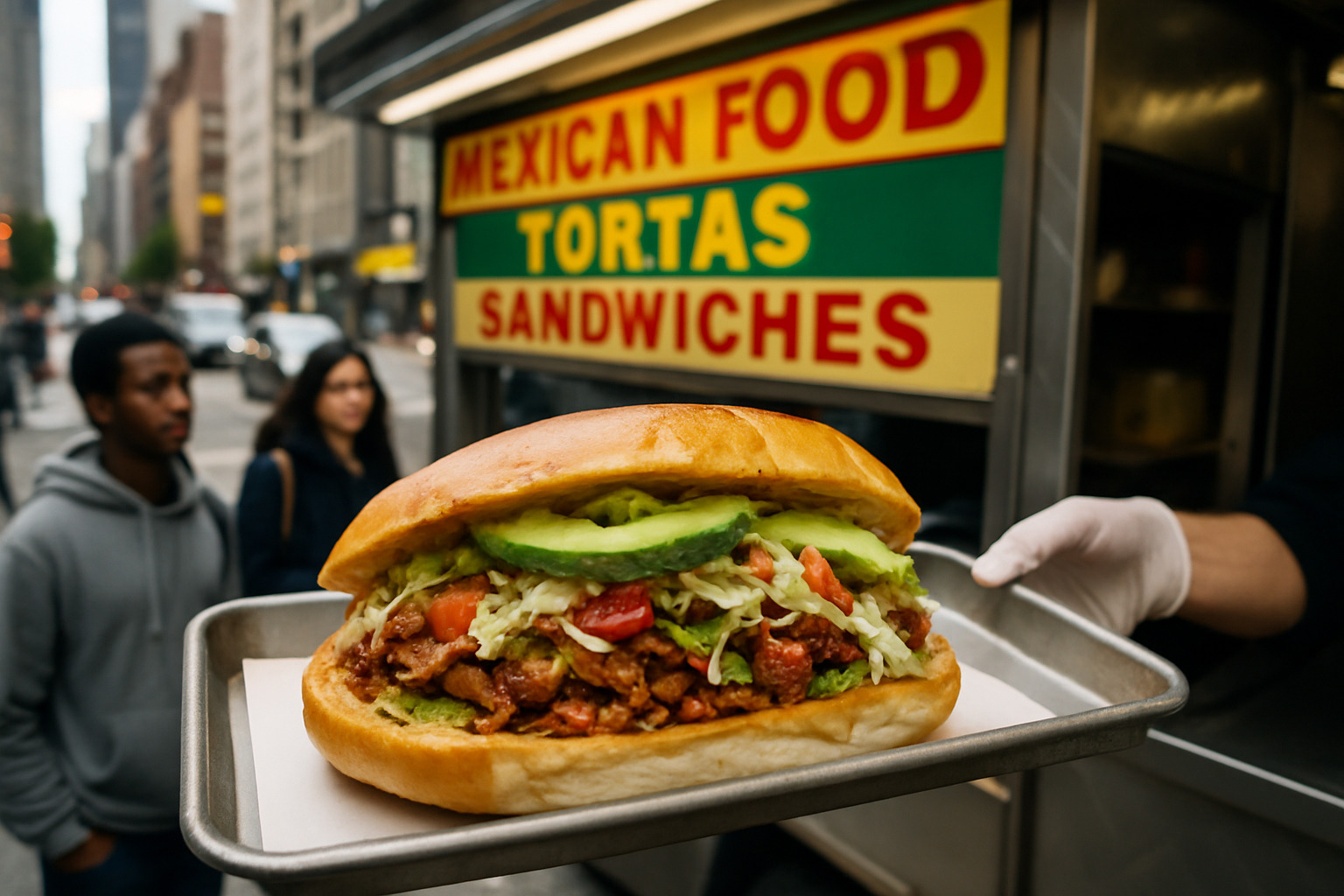
American torta shops often add local touches while respecting fundamental structure. Food trucks bring authentic Mexican street food to office workers and festival-goers, with portability perfect for busy urban life.
Cultural significance runs deeper than hunger. Tortas represent economic opportunity for immigrant families – modest equipment needs and good profit margins help small business owners start fresh. The affordability makes them symbols of resourcefulness.
Festival growth has spread torta culture beyond Mexican neighborhoods, introducing adventurous eaters to this special sandwich. Street vendors become neighborhood fixtures, creating social fabric that makes communities feel like home.
Frequently Asked Questions about Tortas
What’s the difference between a torta and a “torta” cake?
The confusion comes from Spanish language evolution. In Mexico, what is a torta refers to that magnificent sandwich on crusty bread. But in Spain and other Latin American countries, “torta” means cakes, sweet pastries, or flatbreads.
This split happened during Mexico’s 1860s culinary evolution when bakers adapted French techniques and borrowed the existing Spanish term “torta” for new meaning. When traveling, specify “torta mexicana” to avoid mix-ups.
Can I make a vegetarian or vegan torta without losing authenticity?
Absolutely! Mexican cuisine has created incredible vegetarian tortas for generations. Nopales (grilled cactus paddles) represent the crown jewel of vegetarian fillings. Rajas con queso – roasted poblano strips with cheese – create smoky perfection.
For vegan versions, substitute plant-based cheese and crema while keeping authentic Mexican seasonings. Focus on traditional vegetable preparations rather than meat imitations.
How should I eat a torta ahogada without making a mess?
Honestly, if you’re not making a little mess, you’re not doing it right! This “drowned torta” transforms from handheld street food to a knife-and-fork affair. Use utensils to cut manageable portions including bread, filling, and sauce in each bite.
Keep plenty of napkins handy – even Guadalajara locals consider this a deliciously messy experience worth every sauce-stained napkin.
Conclusion
Understanding what is a torta takes us through history, culture, and how food connects people globally. From ancient Latin “twisted bread” to Mexico’s beloved street food sandwich, tortas show how culinary traditions evolve while keeping their heart intact.
French bakers in 1860s Puebla unknowingly created the foundation for an iconic Mexican sandwich. Regional varieties – from Guadalajara’s saucy torta ahogada to Mexico City’s towering torta cubana – prove great food traditions never stop growing.
Tortas embody democratic spirit. You don’t need expensive ingredients or fancy equipment, yet within this simplicity lies endless possibility. The global journey reminds us how immigrant communities carry food traditions like treasured memories.
For those ready to explore beyond tortas, our guide to world cuisine exploration offers more culinary trips.
At The Dining Destination, we know every bite tells a story. The torta proves food is about history, community, and human creativity. After more than 150 years of satisfying hungry people worldwide, this humble sandwich is ready to win your heart too.

